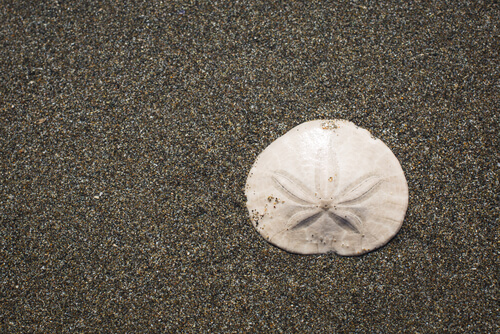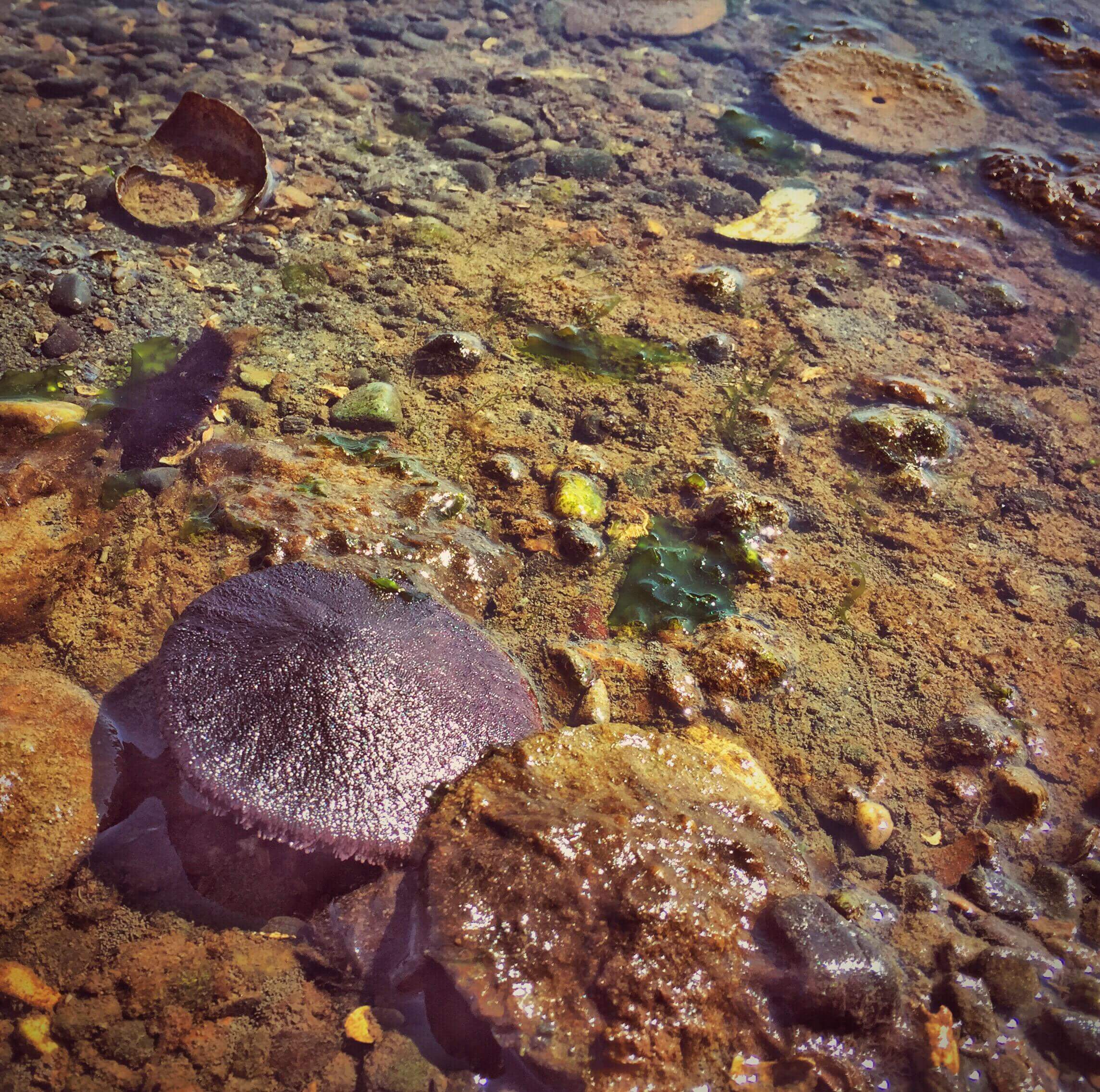
| Kingdom | Animalia |
| Phylum | Echinodermata |
| Class | Echinoidea |
| Order | Clypeasteroida |
| Family | 20+ |
| Genus | Various |
| Niche | Burrowing urchin |
| Length | 2-4 in (5-10 cm) |
| Weight | < 1 Ounce (< 30 g) |
| Lifespan | 6-10 years |
| Conservation Status | Low Risk/Near Threatened |
| Preferred Habitat | Sandy marine benthic |
| Average Clutch Size | 350,000+ per year |
| Main Food Items and Prey | Zooplankton, phytoplankton, detritus |
| Predators | Seagulls, starfish, crabs, otters, fish, octopus, etc. |
The Basics
The sand dollar is a group of sea urchins belonging to the order Clypeasteroida and consisting of more than twenty families. Also known around the world as sea cookies, snapper biscuits, pansy shells, and sand cakes, sand dollars are well-known for their hard, flat tests that are often found by beachcombers.
General
Sand dollar refers to members of the order Clypeasteroida and spans more than twenty families and hundreds of species. The common sand dollar, Echinarachnius parma, is widespread in temperate and tropical climates, making it the most commonly observed species.

Sand dollars are best known for their rigid outer skeleton. In sand dollars and all other urchin species, this is known as a test and is constructed of five symmetrical calcium bicarbonate plates. These tests often remain intact after the animal dies and are ubiquitous along many shorelines throughout the world. Their round, token-like shape has earned them their name ‘sand dollars’ in much of the world.
In living individuals, these tests are often covered with a velvety skin of small, textured spines which themselves are lined with very small hair-like structures known as cilia. These spines help to provide mobility for the animal, with coordinated movements allowing them to move along the seafloor. Depending on the species and individual, these spines are often green, blue, and purple, and provide the color of the individual.
Much like their tests, the bodies of sand dollars display radial symmetry. Their mouths are located in the center of the bottom side of their tests.
Habitat
Sand dollars can be found throughout the world’s oceans, depending on the species. They are normally found living below the low tide line and burrowed into or on top of the seafloor in sandy or muddy areas. Their spines allow them mobility and their burrowing abilities. They are often found in large groups due to their preference for particular types of sediment habitats.

Predators and Prey
Due to their hard, protective tests and their tendency to burrow beneath the sediment, adult sand dollars have few natural predators. At times, they will be detected by the predatory sunflower starfish, which is known to prey on them opportunistically.
Like other urchins, sand dollars have a mouth centrally located on their ventral or underside. Small structures known as podia line the ‘food grooves’ that radiate from this central location. These move food such as algae, diatoms, and detritus along to their mouths for consumption. In addition to these plant materials, sand dollars will also prey on animals such as small larval crustaceans and copepods.
Reproduction
Sand dollars are broadcast spawners, meaning they will release their gametes into the water where they will fertilize externally. Sexes are separate, and once fertilized by the male gamete, embryos released by females will develop into planktonic larvae. These nektonic larvae will metamorphose through several phases of development before their hard test begins to develop. At this point, they will settle out from the water column and become benthic for the rest of their lives.
Fun Facts about the Sand Dollar!
Although their tests are commonly observed around the world, few people have actually seen a living sand dollar due to their difficult-to-access habitats. They are also a fascinating group in terms of evolutionary biology and have many fun facts and interesting insights to explore.
Radial and Bilateral
Although sand dollars are considered to be sea urchins and display many similar traits such as radial symmetry in their tests and bodies, they are also known for some unique traits as well. Unlike other sea urchins, the bodies of sand dollars also display anterior-posterior bilateral symmetry in addition to this radial symmetry. Despite their general petal-like growth pattern consisting of five sections delineated by pores in the test through which gas exchange occurs, the anus of the sand dollar is located at the posterior side of their test rather than at the top as occurs in other sea urchin species.
Depending on the species of sand dollar, there are other bilateral properties displayed such as the oval-shaped test of Clypeaster rosaceus, for example. This secondary bilateral symmetry is thought to have resulted from the adaptation of sand dollars to becoming burrowing animals which, unlike sea urchins, like to embed themselves in the sediment on the seafloor rather than to sit on top of it as urchins do.

Clone Wars
Fascinatingly, larval sand dollars are capable of cloning themselves. However, this is costly in terms of energy spent doing so and developmental delay. Relatively recently, biologists discovered that this may act as a defense mechanism.
Cloning is a means of asexual reproduction that sand dollar larvae have been observed to undergo at times. Due to the energetic costs, this normally occurs when only under optimal conditions, such as when food is plentiful and the temperature is ideal. Cloning may also occur as an evolutionary adaptation that makes use of the tissues that are normally lost during metamorphosis in other species.
In addition, recent research has shown that the larvae of some sand dollars clone themselves in response to the presence of predators. In one experiment, larvae exposed to the mucus of a predatory fish species responded by cloning themselves, effectively doubling their numbers while approximately halving their individual size. Fascinatingly, it was demonstrated that these smaller larvae are better able to escape detection by fish. However, they may also be more vulnerable to predation by smaller animals such as pelagic and planktonic crustaceans, suggesting that the response may be specific to the type and size of predatory perceived by the larvae.
Age Lines
Much like the way rings on the cross-section of a tree stump mark each growing season, sand dollars also have growth rings on the plates of their test. These can also be used to age the individual as the number of rings increases with their body size and their age. In this way, researchers have found that the Individuals of most species live for up to 10 years.
